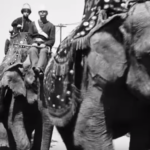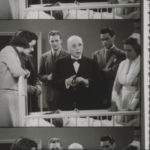Scorsese Uses Jefferson Lecture to Plead for Archiving
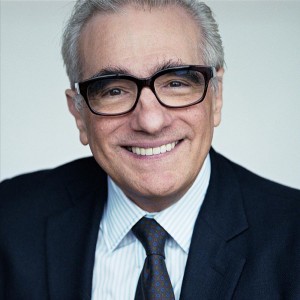 The legacy of motion pictures is at risk.
The legacy of motion pictures is at risk.
That was a key theme – all too familiar to moving-image archivists – that Martin Scorsese developed in his 2013 Jefferson Lecture in the Humanities at the John F. Kennedy Center for the Performing Arts, early this month [April 1, 2013].
He used the prestigious event to plead for greater commitment to finding, restoring, and archiving – and reveling in – motion pictures.
The Jefferson, which is the most prominent lectureship that the U.S. federal government awards, was not the only distinction bestowed on the great filmmaker. He also became the only non-literary lecturer ever appointed.
Before a full house at the Kennedy Center, Scorsese celebrated the onward progress of film: “If we spend too much time lamenting what’s gone, then we’re going to miss the excitement of what’s happening now. Everything is wide open. … I think it’s an exciting time precisely because we don’t know what tomorrow will bring.” But he also stressed the importance of shoring up film’s foundations.
Previous honorees during the 44 years of the lectureship have included fiction and nonfiction writers Wendell Berry, Drew Gilpin Faust, John Updike, Henry Louis Gates, Jr., Bernard Bailyn, Toni Morrison, Arthur Miller, James McPherson, Barbara Tuchman, and Robert Penn Warren.
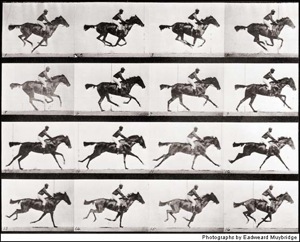 But “intellectual achievement can occur in realms other than that of the classroom and the book,” said Jim Leach, the chairman of the National Endowment for the Humanities and formerly a longtime Congressman, introducing Scorsese. He also noted that the filmmaker’s presentation would be the first Jefferson Lecture to incorporate video selections, the first to be broadcast live and archived on the Internet, and the first with a Twitter hashtag: #JeffLec2013.
But “intellectual achievement can occur in realms other than that of the classroom and the book,” said Jim Leach, the chairman of the National Endowment for the Humanities and formerly a longtime Congressman, introducing Scorsese. He also noted that the filmmaker’s presentation would be the first Jefferson Lecture to incorporate video selections, the first to be broadcast live and archived on the Internet, and the first with a Twitter hashtag: #JeffLec2013.
“Tonight’s Jefferson Lecture takes the ancient format of the speech, and updates it for modern audiences,” Leach said.
Scorsese’s lecture was titled “Persistence of Vision: Reading the Language of Cinema,” and he addressed both parts of that rubric. He delivered a sort of Language of Film 101 survey, incorporating examples from film early to recent. For example, he glossed contenders for inventor of the medium, and their forebears: visionaries like Eadweard Muybridge who in the 1870s and 1880s prepared the way for cinema with his proto-cinematic photographic studies of motion.
Scorsese spoke about essential elements of film: light, movement of still images, the creation of “pieces of time,” film’s means of provoking viewers to infer action and sentiment from discontinuous, multi-perspectival depiction – the composition of life.
To illustrate, Scorsese showed clips from such classic films as The Great Train Robbery, The Day the Earth Stood Still, and 2001: A Space Odyssey. He asked: How did the Lumière brothers, in their Arrival of A Train at Cliotat (a scene of which Scorsese recreated in his Hugo) suggest in two dimensions movement in three? How did the concept and practice of the “cut” arise and enter into cinema, to allow viewers to shift among vantage points, all while perceiving continuity, disruption, or change of place and action?
He wished to suggest more: to suggest that cinema, while conveying meaning in its own distinctive ways, is akin to spoken and written language in creating meaning. It follows, he argued, that visual literacy is not just as important as verbal literacy, but also of a piece with it. “We need to be able to understand what we’re seeing and find the tools to sort it all out,” he said, adding: “We’re face to face with images all the time in a way that we never have been before. And that’s why I believe we need to stress visual literacy in our schools. Young people need to understand that not all images are there to be consumed like fast food and then forgotten. We need to educate them to understand the difference between moving images that engage their humanity and their intelligence, and moving images that are just selling them something.”
Scorsese also developed the theme of visual literacy. He cited Steve Apkon, an American film producer and advocate: “The distinction between verbal and visual literacy needs to be done away with.”
“In the end,” Scorsese suggested, “there really is only literacy.”
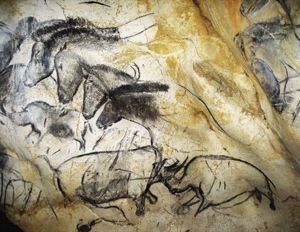
Linking the two parts of his title was a more-subtle element of Scorsese’s presentation: his explication of ways in which the expressiveness of cinema constitutes a legacy of human awareness and expression, and a way of providing a text for later generations of those accomplishments.
From at least 30,000 years ago, when ancestors in what is now Chauvet, France, created cave paintings of such images as a horse with multiple legs to convey a sense of its movement, humans have sought to evoke and express fundamental facets of their world and awareness, he said. In the capture of forms, light has always been “at the core of who were are,” he said. “This need to recreate movement is a mystical urge, it’s an attempt to capture who and what we are and then to think about that, to contemplate that mystery.”
n
 The evening began with a montage of Scorsese’s own contributions to such efforts – a series of stills from his vast and celebrated output. It served as a reminder not just of how large his output has been, but also how varied. In some 50 films, from the highly memorable to the not-so-much, he has arguably made as significant a mark on American cinema as any individual.
The evening began with a montage of Scorsese’s own contributions to such efforts – a series of stills from his vast and celebrated output. It served as a reminder not just of how large his output has been, but also how varied. In some 50 films, from the highly memorable to the not-so-much, he has arguably made as significant a mark on American cinema as any individual.
Rather melancholy musical accompaniment to the slide presentation conveyed a sense of the transience of any career: that films, like any artifacts, recede into the past. Several slides of deteriorated film underscored this reality. Time may leave behind films and their legacies. And Scorsese’s films have created a broad range of expression and significance, Leach said in his introduction. They have addressed “isolation and ethic Identity, violence and loss, guilt and redemption, faith and spirituality,” he observed.
His passion for film, Scorsese said, dates from long before he studied as an undergraduate and graduate student at New York University – long, long before his accomplishments earned such recognitions as one Academy award and three golden globes for best director, along with an American Film Institute Lifetime Achievement Award and many others, American and European. He related that, as a child, he often went with his parents to the movies, in part because they were film mad, but also because they sought activities that would not exacerbate his asthma, which precluded him from sports.
Movie going reinforced family bonds: “We connected through the movies, and over the years, I know now, that warmth, the connection with my family and the images up on the screen, gave me something very precious, because we were experiencing something fundamental together. We were living through the emotional truths on the screen together.”
The films they watched, in the 1940s and 50’s, conveyed senses of what it was to be human: “Sometimes they were expressed in small things: gestures, glances, reactions between the characters, light, shadow… We experienced these things that we normally couldn’t discuss, or wouldn’t discuss, or even acknowledge in our own lives. And that’s actually part of the wonder.”
Scorsese dated his fascination with film to a particular experience: going with his father, when only eight, to see John Boulting’s 1951 movie, The Magic Box. It told “the story of William Friese-Greene (played by Robert Donat), a British inventor “who (this film would have you think) made the first movie camera,” as IMDB puts it. In the movie, at least, he “gave everything to film and died poor,” said Scorsese.
Made for an event called The Festival of Britain, The Magic Box had roles for dozens of well-known actors, most making cameos, as did Laurence Olivier, a policeman whom Friese-Greene hauls off the street to witness the wonder of his just-completed first projector. Scorsese said of the film: “I have never really gotten over the impact that it had. And I believe this is what ignited in me the wonder of cinema, and the obsession: watching movies, making movies, inventing movies.”
Going to the cinema “for me was like entering a sacred space, a sanctuary, where the world around me seemed to be recreated and played out.”
Given what he has done with that impetus, it was no wonder to hear him suggest that to condemn film as “not really life” is “just a way of avoiding the power of cinema. Of course it’s not life; it’s an invocation of life, it’s an ongoing dialog with life.”
It follows that educators need to inculcate visual literacy, “so that the young understand the difference between moving images that engage their humanity and their intelligence, versus just selling them something,” he argued.
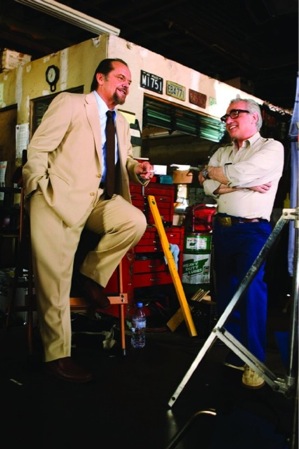
Scorsese is also chairman of the World Cinema Foundation, and in his welcome to its site ventures: “There is now, I believe, a film preservation consciousness.”
He said in his Jefferson address: “In order to experience something, and find new values in it, it’s got to be there in the first place. You have to preserve it. All of it.”
His explanation of why that need arises, what impedes it, and what might be done about it, were the commonplaces of moving-image archiving – the fragility of celluloid, its replacement in the 1950s with “safety stock,” and the neglect of preservation due to the lack in most film makers, producers, and presenters of even the concept of archiving.
Over the course of film history, much has been lost, even popular films whose originals were so often copied to meet demand that they sore down to waste.
And, “it wasn’t so long ago that nitrate film was melted just to get the silver content back,” he noted. Prints of films made in the 70s and 80s were recycled into guitar picks and plastic shoe heels. “It’s a disturbing thought, just as disturbing as knowing that those extraordinary glass photographic plates that Mathew Brady took on Civil War battlefields, just after the birth of photography, were sometimes sold to gardeners to make greenhouses.”
“We have to really take good care of what’s left – everything, from the acknowledged masterworks of cinema to industrial films and home movies.” A paltry 10 percent of silent films remain in existence. “Every time a silent picture by some miracle turns up like John Ford’s film he made in 1927 called Upstream, which was recently discovered by the National Film Preservation Foundation in an archive in New Zealand – every time one of those shows up we have to remind ourselves that there are hundreds, maybe thousands more that are gone forever.”
The impossibility of arguing for the later importance of particular films argues for the preservation of as many such artifacts as possible, he said. Hitchcock’s Vertigo initially was ill received; only later did appreciation come of its “hypnotic beauty and very strange, obsessive focus.” Betweentimes, Hitchcock himself pulled it from distribution, along with others of his films, so that it fell out of circulation and required restoration of its color. The accomplishment of Citizen Kane quickly drew acclaim, but in the 1970s its original negative came close to disappearing in a fire.
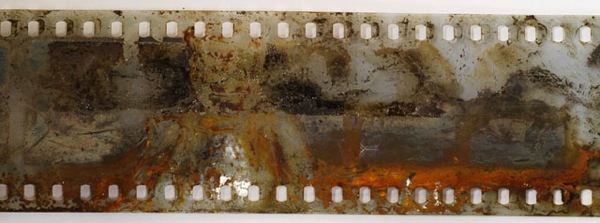
The current cultural obsession with box-office figures “culturally trivializes film,” Scorsese charged.
Scorsese’s lecture did contain some hyperbole, as when he proclaimed that “the moment has come when we need to treat every last moving image as reverently and respectfully as the oldest book in the Library of Congress.”
And: “Just as we’ve learned to take pride in our poets and writers, in jazz and the blues, we need to take pride in our cinema, our great American art form.”
Writers and academics – the camps from which Jefferson lecturers have come, until now, are generally less given to such overstatement.
Video and a transcript of the lecture are online. The March/April 2013 issue of Humanities: The Magazine of the National Endowment for the Humanities includes film critic Kent Jones’s ”With Love and Resolution”: An Appreciation: The Art of Martin Scorsese.
– Peter Monaghan
Previous Post: Rediscovering Films, The Film Foundation, and Martin Scorsese
Next Post: Video of the Day: Films from the Home Front



